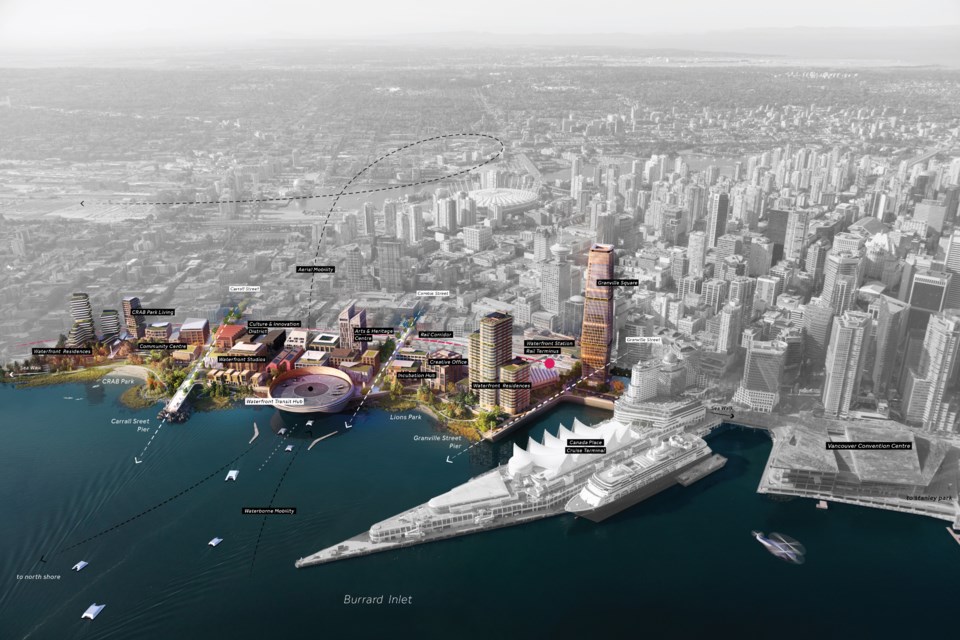For years there has been discussion about Vancouver's central waterfront area, between Canada Place and the Port of Vancouver.
Now two international firms have put forth a possible design to try to move things forward.
"The vision is a self-initiated proposal that we have made. We hope it will trigger more momentum for the evolution of this important (yet complex) part of the city," states Matthew Donkersley of Farrells in an email to V.I.A.
The conceptual design — covering an area currently occupied by Waterfront Station, the Helijet terminal and CRAB Park — was created by Farrells, an architecture and urban design firm based in London (with Hong Kong and Shanghai offices), in collaboration with Arup, an engineering firm with offices in dozens of countries.
"This vision explores how the strategic integration of emerging transport trends could energize the area, helping to transform it into a walkable social epicentre whilst also enhancing cross-harbour connectivity," reads a press release from the pair of companies.
Their concept shows a variety of new buildings and new infrastructure, including a helipad capable of handling 10 helicopters, a new massive tower at Granville Square, new piers over the water for pedestrians, and thousands of new waterfront residences.
The design leaves CRAB Park in place and shows an additional park with a beach next to Canad Place. Other community spaces are discussed as well.
"The proposal focuses on the waterfront lands around the CP rail yard that separates downtown Vancouver and Gastown from the Burrard Inlet," reads the press release.
"While this pocket of the city boasts stunning views of harbour activity and the North Shore Mountains, it remains undeveloped largely due to poor pedestrian connectivity and complex site ownership."
Much of the land covered by the concept is used for the CP rail yard, though in the design some of the rail yard remains with pedestrian overpasses on Carrall, Cambie and Granville streets. The designers note that new and incoming transportation technology would allow for flexibility for getting in and out of the new district, including autonomous boats, aerial vehicles, and potential rail options.
While the design shows a potential future, the firms note it's not a concrete proposal.
"As such, the current proposal is conceived as a tangible 'sandbox' for all to engage with," reads the press release.
"Ultimately it is hoped that the dialogue that this vision generates will encourage the value of this stretch of waterfront to be universally recognized and offer further motivation for its development as an integral part of Vancouver’s urban experience."



